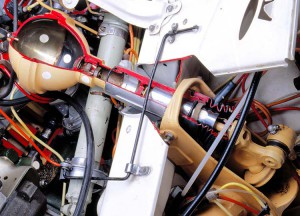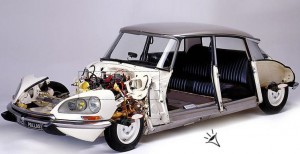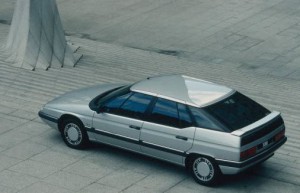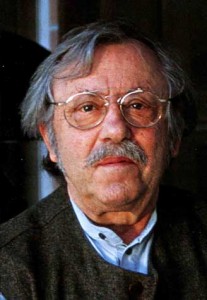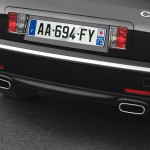
(English below, en Francais au-dessous)
In wenigen Tagen ist es wieder soweit – die 26. Techno-Classica, Weltmesse für Oldtimer, Classic- & Prestige-Automobile, Motorsport, Motorräder, Ersatzteile, Restaurierung und Welt-Clubtreff, öffnet vom 26.-30. März 2014 ihre Pforten in Essen/Ruhr.
Auch in diesem Jahr wird die Citroën-Strasse, der Gemeinschaftsstand der grossen deutschen Citroën- und Panhard-Clubs, in der Halle 9.1, Stand 135 auf rund 400qm präsent sein. Das Thema in diesem Jahr befasst sich aus aktuellem Anlass mit der Hydropneumatik, über Fahrzeuggenerationen hinweg ein Alleinstellungsmerkmal von Citroën-Automobilen. Von Kennern geschätzt, eine technisch-innovative Meisterleistung. Blicken wir 6 Jahrzehnte zurück auf “60 Jahre Hydro-Culture“.
Der Auszug dazu aus der aktuellen “Epoche”, dem Citroën-Sonder-Journal zur Messe (Text: Amicale Citroën Deutschland):
Die Hydropneumatik war über Fahrzeuggenerationen hinweg ein Alleinstellungsmerkmal von CITROËN – von Kennern geschätzt, eine technisch-innovative Meisterleistung, die in diesem Jahr ihr 60-jähriges Jubiläum feiert.
Schwingende Massen als Herausforderung
Ein Rückblick in die frühen Jahrzehnte des Automobilbaus: Neben den klassischen Technologien zur Erhöhung des Komforts – wie der Einführung von Luftreifen, mechanischen Federn und Aufhängungen sowie Stoßdämpfern – stellt sich auch bei CITROËN die Frage, wie die Effizienz noch weiter verbessert werden kann. In puncto Komfort stellen schwingende Massen stets ein Problem dar. Die Vibrationen des Motors konnten durch das Patent des „Moteur flottant“ (schwebender Motor) erfolgreich minimiert werden.
Revolutionär: Gas anstelle von Torsion eines Metalls
Doch es bleibt die Frage: Wie viele Teile müssen bewegt werden, um eine optimale Federung und Dämpfung zu erzielen? Die CITROËN Ingenieure konzipieren einen neuen, revolutionären Ansatz. Statt auf Torsion eines Metalls wird auf Gas gesetzt, das es zu komprimieren gilt. Die Übertragung des Hebelwegs geschieht per Flüssigkeit anstelle der konventionellen Hebelmechaniken und bietet dadurch neue Möglichkeiten zur effizienten Nutzung des Motorraums. Das Rad überträgt die Unebenheiten der Fahrbahn über den Kolben eines Hydraulikzylinders auf die Flüssigkeit, die über Leitungen in einer Federkugel mündet und dort – durch eine Membran getrennt – Stickstoff zusammenpresst. Die Menge der von einer Hochdruckpumpe ins System beförderten Hydraulikflüssigkeit wird mit dem Höhenkorrektor, einem automatischen Regulierventil, bestimmt und pro Achse geregelt. Auch bei Beladung regelt der Korrektor den notwendigen Druckausgleich, damit stets die Idealhöhe der Karosserie erhalten bleibt. Im Bedarfsfall kann im Innenraum die Bodenfreiheit manuell verstellt werden.
CITROËN DS19 mit Hydropneumatik – ein Mythos in Sachen Komfort
Neben den ersten Prototypen-Tests wird die Technologie in größerer Stückzahl an der Hinterachse des CITROËN Traction Avant 6-Zylinder eingebaut, der als Modell „15-Six H“ von April 1954 bis Juni 1955 insgesamt 3.077 Mal verkauft und unter anderem als Staatslimousine von Präsident René Coty genutzt wird. Beim CITROËN DS19, der legendären „Göttin“, wird die Niveauregulierung zur „Zentralhydraulik“ mit Lenkunterstützung und einer Zweikreisbremsanlage mit lastabhängiger Hochdruckservounterstützung erweitert. Der Olymp des Komforts seiner Zeit ist erreicht, ein Mythos geboren. Der Philosoph Roland Barthes beschreibt die „Déesse“ als „Kathedrale der Neuzeit“: CITROËN ist der Konkurrenz um Welten entschwebt.
Mit der Hydropneumatik auch sehr sportlich unterwegs
Aber auch all diejenigen, die das sportliche Fahren bevorzugen, können von der Hydropneumatik profitieren. Der CITROËN SM stellt eindrucksvoll unter Beweis, dass Geschwindigkeiten von bis zu 230km/h mit dieser Technologie möglich sind. Etliche Siege und Top-Platzierungen bei Rallyes in den 60er und 70er Jahren unterstreichen die herausragende Leistungsfähigkeit. Im Laufe der Jahre wird die Technologie kontinuierlich verbessert und kommt in den Nachfolge-Modellen CITROËN CX, BX, M35, GS und GSA zum Einsatz. Selbst der CITROËN HY als Krankenwagen erhält zeitweise eine hydropneumatisch gefederte Hinterachse.
Anbruch der digitalen Ära
Waren die Systeme zunächst rein analog ausgeführt, so bricht mit der Einführung des CITROËN XM die digitale Ära an: Mit der „Hydractive“-Technologie zieht die elektronische Steuerung ein. Dank der Auswertung der Sensoren für Geschwindigkeit, Lenkung, Gaspedal, Bremsdruck und Federweg wird sowohl eine komfortable, weiche als auch eine sportlich-straffe Federung erzielt. 1993 erhält der CITROËN Xantia die verbesserte zweite Generation des Hydractive-Fahrwerks mit dreifacher Rechenleistung – somit kann auch die Karosserieneigung in Kurven aktiv kompensiert werden.
Ideale Dämpfung, bis zu 400 Mal pro Sekunde ermittelt
Der CITROËN C5 ab März 2001 und der CITROËN C6, der von November 2005 bis Dezember 2012 produziert wird, sind die letzten Modelle mit Hydropneumatik. Der CITROËN C6 ermittelt und regelt in Echtzeit für jedes einzelne Rad bis zu 400 Mal pro Sekunde die ideale Dämpfung und gilt bereits heute als moderner Klassiker, zu dem es in Deutschland und international bereits eigene Clubs gibt.
Die „Citroën-Straße“ auf der Techno-Classica
Die „Citroën-Straße“ auf der Techno-Classica, die Clubgemeinschaft der deutschen Citroën-Clubs, widmet sich in ihrer Retrospektive unter dem Motto „60 Jahre Hydro-Culture“ diesem Technik-Thema. In Halle 9.1 der Messe Essen können neben rund einem Dutzend Modellen besondere Pretiosen wie beispielsweise das berühmte DS- und BX-Schnittmodell bewundert werden. Der CX-Prototyp „Projet L“ rundet die Ausstellung ab. Weitere Infos auf www.amicale-citroen.de.
Wir freuen uns insbesondere in diesem Jahr auch Robert Opron, den Meister der Formen der 60er und 70er Jahre bei Citroën, verantwortlich für den Citroën SM, den CX, den GS/GSA, bei uns mit seiner Frau Geneviève Opron auf dem Clubstand begrüssen zu dürfen. Erstmalig – und vermutlich auch einmalig in Deutschland – wird es möglich sein, den für Design verantwortlichen früheren Hauptabteilungsleiter der “Bureaux d’Etudes” neben “seinem” CX-Protoyp “Projet L” und den nachfolgenden Serienmodell zu sehen.
Ferner erwarten wir ranghohen Besuch aus den Chefetagen in Paris – die Einladungen an das Top-Management bei PSA Citroën wurden bereits vor Wochen ausgesprochen.
Auch die Amicale-Boutique wartet mit einem weiteren Highlight auf – es ist uns gelungen, erstmalig den berühmten Auto-Comic-Zeichner Thierry Dubois auf unseren Stand zu bringen, der die neuen deutschsprachigen (und natürlich auch in französischem Original erhältlichen) Auto-Comics von “Salleck Productions” signieren wird!
Citroën C6 Galerie – eine Hommage an den Klassiker, den wir nicht auf der Messe zeigen können:
—–
“60 Years of Hydro-Culture” at Citroën Club booth, Techno-Classica 2014
For the 26th time, the World Show for Vintage, Classic and Prestige Automobiles, Motorsport, Motorcycles, Spare Parts, Restauration and World Club Meeting, known as “Techno-Classica”, will open from March 26th to 30th, 2014. On 120.000 m2, divided into 20 halls and 4 open air areas, more than 1.250 exhibitors from 30 nations, of which are 220 Clubs and Interest Groups, will display their portfolio to the expected 200.000 visitors.
Of course, also the “Citroën-Strasse”, the exhibitor association of all German Citroën and Panhard clubs will be present, as always in Hall 9.1.
The theme this year will be dedicated to the Hydropneumatic technology, for many vehicle generations a unique selling point of Citroën. Appreciated by connoisseurs, a technically innovative masterpiece. We will be looking back onto six decades of “Hydro-Culture“.
Citroën Deutschland GmbH will issue a dedicated journal in the context of this exhibition. A quote from a related article, (written and translated by Amicale):
The Hydraulic system developed by CITROËN was a unique selling point for many generations of automobiles – valued by connoisseurs, a technically innovative masterpiece which celebrates its 60th anniversary this year.
Oscillating masses as a challenge
Let’s have a look back into the early decades of automotive engineering: In addition to classic technologies to increase comfort – such as the introduction of air-filled tires, mechanical springs, suspensions and shock absorbers – is also a question at the labs of CITROËN on how the efficiency can be further improved. In terms of comfort, swinging masses always poses a problem to those who deal with such dynamics. The engine’s vibrations could be successfully minimized by the introduction of the patented “Moteur flottant” (floating motor) technology.
Revolutionary: gas instead of torsion of a metal
But the central question remains: How many parts have to be moved in order to achieve an optimal suspension and damping? The Citroën engineers start from scratch and design a new, revolutionary approach. Instead of a bending a metal a completely different medium is being introduced: a gas which is going to be compressed. The transfer of lever travel is done by fluid instead of the conventional mechanisms, thus providing new opportunities for the efficient use of the engine compartment. The wheel is transferring the unevenness of the road surface via a piston inside a hydraulic cylinder onto a fluid, which is routed via small tubes into a sphere and there – separated by a membrane – compressing nitrogen gas. The amount of liquid in this system is controlled by the height corrector, an automatic control valve, which determines and controlles per axis the amount of hydraulic fluid, which a high pressure pump then adds to the circuit. Even when the car gets additional weight to carry, the corrector controls necessary pressure equalization, so always the ideal height of the body is maintained. If necessary, a manual adjustment in the interior allows the driver to select a different ground clearance on demand.
Citroën DS19 with Hydro-pneumatic – a Myth in Terms of Comfort
In addition to the first prototype testing, the technology is installed in large numbers on the rear axle of the CITROËN Traction Avant 6-cylinder, a model which is sold as “15-Six H” from April 1954 to June 1955 with a total of 3,077 units and among others is being used as a presidential limousine by the French President René Coty. On the CITROËN DS19, the legendary “goddess”, one year later the system is extended, complementing the now called “central hydraulics” with additional power steering and a dual-circuit brake system with load-dependent high pressure power assistance. The “cloud nine” comfort of that time is reached, a myth is born. The famous French philosopher Roland Barthes describes the “Déesse” as an “modern equivalent to the Gothic cathedral”: CITROËN soars to the competition.
Comfort Meets Sports
But even those who prefer sporty driving, can benefit from the hydropneumatic suspension. The Citroën SM is an impressive proof that speeds of up to 230km/h are possible with this technology. Quite a few wins and top placings at rallies in the 60s and 70s underline the outstanding performance. Over the years, the technology is continuously improved and continues to be a substantial part in the successor models such as CITROËN CX, BX, M35, GS and GSA. Even the CITROËN HY as an ambulance van gets temporarily a hydraulic suspension at the rear axle.
Dawn of the Digital Era
While the origins of this revolutionary technology were first carried out in the analog age, the introduction of the CITROËN XM paves the way into the digital era: With the “Hydractive” technology, electronic management is introduced. Thanks to the continuous evaluation of sensors for speed, steering, accelerator pedal, brake pressure and spring travel both a comfortable, soft as well as a sporty-stiff suspension is achieved. In 1993, the improved second generation of “Hydractive”-control is introduced in the CITROËN Xantia, with a tripled computing power – hence the body roll in corners can be actively compensated.
Ideal Damping, Determined up to 400 Times per Second
The CITROËN C5 from March 2001 and the CITROËN C6, which is produced from November 2005 to December 2012, are the latest models with hydro-pneumatic suspension. In the CITROËN C6, the ideal damping is determined and regulated in real time for each individual wheel up to 400 times per second. This car already today is considered a modern classic vehicle, and nationally in Germany as well as in a few countries dedicated car clubs have been founded dedicated to this car.
“Citroën-Strasse” at the Techno-Classica
The “Citroën-Strasse”, the exhibiting association of the German Citroën and Panhard clubs, will be present at the Techno-Classica 2014, and dedicates its retrospective technology exhibition under the motto “60 Years of Hydro-Culture“. In Hall 9.1 of Messe Essen (half an hour north of Düsseldorf) alongside about a dozen models, also very unique models such as the famous CITROËN DS Cutaway and CITROËN BX Cutaway models provided by the Conservatoire can be admired. The CITROËN CX prototype “Projet L” rounds off the exhibition. More information is available at www.amicale-citroen.de/.
We are particularly pleased to again welcome this year M. Robert Opron, the master of the shapes of the 60s and 70s at CITROËN, responsible for the design of CITROËN SM, CX , GS/GSA with his wife Geneviève Opron at our club booth. For the first time – and thus a very unique occasion in Germany – it will be possible to see the previous Head of Design Department of “Bureaux d’Etudes ” next to “his” CX prototype “Projet L” masterpiece and the subsequent production models.
We also expect high-ranking visit from the PSA Citroën Germany and France – the invitations to the top management have been sent out.
The Amicale boutique also welcomes another highlight – we have managed to invite for the first time the famous car-comic artist Thierry Dubois to our booth who will autograph the new German (and of course also available in French language) automotive comics published by “Salleck Productions”!
So: welcome – bienvenue – willkommen @ Citroën-Strasse 2014!
—–
Citroën-Strasse @ Techno-Classica 2014: “60 ans de la Hydro-Culture”
Dans quelques jours, la plus grande foire pour les voitures anciennes, la 26eme “Techno-Classica, World Show pour Vintage, Classic & Prestige Automobiles, Motorsport, Motos, Pièces de rechange, la restauration et la Réunion du Monde des Clubs”, se tiendra du 26 au 30 Mars 2014 à Essen / Ruhr (une demi heure au nord du Dusseldorf).
Cette année aussi, la “Citroën-Strasse”, le stand commun des grands clubs allemands Citroën et Panhard, être présent à près de 400 mètres carrés dans le Hall 9.1, Stand 135. Le thème de cette année met l’accent sur l’actualité avec l’hydro-pneumatique (“hydraulique”), sur générations des automobiles une caractéristique unique de Citroën. Apprécié par les connaisseurs, un chef-d’œuvre d’innovation technique. Lorsque nous presentons dans une retrospective sur six décennies “60 ans d’Hydro-Culture”.
L’extrait ce de la “Époque” actuelle, la revue spéciale produit par CITROËN en Allemagne (texte: Amicale Citroën Deutschland):
Le suspension hydropneumatique était au fil des générations une caractéristique unique de CITROËN – estimé par les connaisseurs, un chef-d’œuvre technique innovante, qui célèbre son 60e anniversaire cette année.
Masses oscillantes comme un défi
Cette année, nous jetons un regard rétrospectif sur les premières décennies de la construction d’automobile: En plus des technologies classiques pour augmenter le confort – tels que l’introduction des pneumatiques, des ressorts mécaniques et suspensions et amortisseurs – est également présent lorsque CITROËN la question de savoir comment l’efficacité peut être améliorée. En termes de confort, faire balancer les masses est toujours un problème. Les vibrations du moteur peut être minimisé avec succès par le brevet et l’introduction du “Moteur flottant”.
Révolutionnaire! Gaz au lieu de torsion d’un métal
Mais la question demeure: combien de pièces doivent être déplacés afin de parvenir à une suspension et d’amortissement optimale? Les ingénieurs de Citroën one concevoir une nouvelle, révolutionnaire approche. Au lieu d’une touche de métal on prend gaz pour le comprimer. Le transfert de voyage de levier se fait en liquide à la place des mécanismes classiques comme la torsion d’un metal, offrant ainsi de nouvelles opportunités pour l’ utilisation efficace du compartiment moteur.
Citroën DS19 avec hydropneumatique: un mythe en termes de confort
Après les premiers prototypes sont fait pour tester la technologie, elle est installé dans un grand nombre sur l’essieu arrière de la CITROËN Traction Avant 6 cylindres vendu “15-Six H” d’Avril 1954 jusqu’au Juin 1955, un total de 3077 voitures. Entre autres choses, c’est aussi utilisé la limousine d’Etat du Président René Coty. Avec la Citroën DS19, la légendaire “déesse”, la régulation des niveaux est élargi a une “centrale hydraulique” avec la direction assistée et système de freinage à double circuit avec assistance de puissance à haute pression fonction de la charge. Le confort maximum de son temps est atteint, un mythe est né. Le philosophe Roland Barthes décrit la “Déesse” comme une “cathédrale gothique des temps modernes”: CITROËN monte aux mondes de la concurrence.
Avec les hydropneumatics également route très sportive
Mais même ceux qui préfèrent une conduite sportive, peuvent bénéficier de le hydropneumatique. La Citroën SM est une preuve impressionnante que des vitesses allant jusqu’à 230 kilomètres par heure sont possibles avec cette technologie. Très peu de victoires et meilleurs classements lors de rassemblements dans les années 60 et 70 soulignent la performance exceptionnelle. Au fil des ans, la technologie est constamment améliorée et vient dans les nouveaux modèles de la Citroen CX, BX, M35, GS et GSA à. Même la Citroën HY avec carosserie ambulance Currus obtient temporairement un essieu arrière à suspension hydraulique.
L’aube de la generation digitale
Ont d’abord été réalisée dans les systèmes analogiques, dans la Citroën XM commence la generation digitale: Grâce à la technologie “Hydractive”, le contrôleur est électronique. Merci à l’évaluation des capteurs de vitesse, direction assistée, la pédale d’accélérateur, la pression de freinage et la course de la suspension, un reglement confortable, souple ainsi qu’une suspension sportif-rigide est atteint. En 1993, l’amélioration de la deuxième génération de “Hydractive” châssis reçoit la Citroën Xantia avec triple puissance de calcul – d’où le roulis dans les virages peut être compensée activement.
Amortissement idéal, jusqu’à 400 fois par seconde reglés
La Citroën C5 de Mars 2001 et la Citroën C6, qui est produite à partir de Novembre 2005 to Décembre 2012, sont les derniers modèles avec technologie hydropneumatique. La supension de la Citroën C6 est déterminé et réglé en temps réel pour chaque roue jusqu’à 400 fois par seconde l’amortissement idéal. La voiture et déjà est maintenant considéré comme un voiture “classique moderne”, et les derniers clubs C6 national et international à laquelle sont les preuves pour cet developpement.
La “Citroën-Strasse” au Techno Classica
La “Citroën-Strasse”, la communauté des clubs Citroën et Panhard en Allemagne, consacre son exposition rétrospective sous le titre “60 ans d’Hydro-Culture” pour fétér de la technologie. Dans le Hall 9.1 de “Messe Essen” aux côtés d’une douzaine de modèles gemmes spéciales telles que les célèbres modèles DS-section et BX-section peuvent être admirés. Le CX-prototype “Projet L” complète l’exposition. Plus d’informations sur www.amicale-citroen.de.
Nous sommes particulièrement heureux d’accueillir cette année encore une fois M. Robert Opron, le maître des formes des années 60 et 70 à CITROËN, responsables de la conception de CITROËN SM, CX, GS / GSA avec son épouse Geneviève Opron sur notre stand des clubs Citroën. Pour la première fois – et donc une occasion tout à fait unique en Allemagne – il sera possible de voir le précédent chef de département de design de “Bureaux d’Etudes” à côté de “son” prototype CX “Projet L” chef-d’œuvre et les modèles de production ultérieurs.
Nous prévoyons également de haut rang visite du PSA Citroën Allemagne et la France – les invitations à la haute direction ont été envoyés.
La boutique Amicale accueille également un autre point fort – nous avons réussi à inviter pour la première fois le célèbre artiste de voiture-comique Thierry Dubois à notre stand qui dédicacer le nouveau allemand (et bien sûr également disponible en langue française) BD automobile publié par “Salleck productions”!
